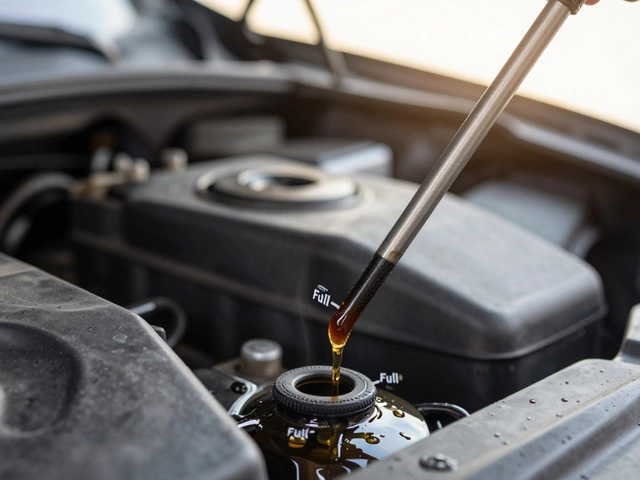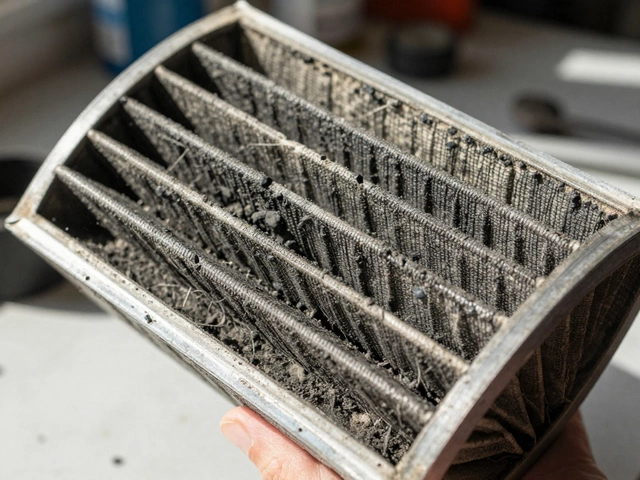
Ever been caught in a sudden downpour only to find your windshield wipers are more smear than clear? Yeah, that's a pretty rough ride. Most people don't think about their wipers until it's too late. On average, those little rubber lifesavers should last about six to twelve months. But hey, there's a lot more to the story than just numbers.
The lifespan of your wipers can vary, depending on several interesting factors. Temperature shifts, regular exposure to sunlight, snow, and even the frequency of use play key roles in how long they stick around before giving up. If you live in an area where weather swings from hot summers to icy winters, you might need to swap them out more often.
- Understanding Wiper Lifespan
- Factors Affecting Durability
- Signs You Need New Wipers
- Tips for Longer-Lasting Wipers
Understanding Wiper Lifespan
When it comes to windshield wipers, their lifespan might seem straightforward at first glance, but there's more beneath the surface. In general, most wipers are designed to last between six to twelve months. But why such a wide range? Well, it's all about usage, environment, and a little TLC.
One key factor that impacts wiper lifespan is how often you use them. Think about it — if you're in a sunny place where rain is a rare guest, your wipers might stay in pretty good shape for longer. On the flip side, if you're living in an area with frequent rain or snow, your wipers are getting quite the workout, which might wear them out faster.
Climate Considerations
Climate plays a big role in how long wipers last. Extreme heat can cause the wiper blades to warp or crack, while icy conditions might make them brittle. It's not just seasonality either; sunlight exposure can break down the rubber compounds over time, leading to chipping or splits.
Material Matters
Another piece of the puzzle is the material of the wiper blades. Traditional rubber blades are affordable, but they can deteriorate quickly in rough conditions. Silicone blades, on the other hand, tend to be more durable and are less sensitive to extreme temperatures. Considering what material suits your conditions could be a game-changer for longevity.
The Manufacturer's Insight
Manufacturers often provide their own lifespan estimates, and it's worth checking your car's manual or the wiper packaging for this guidance. However, keep in mind that these estimates assume perfect conditions, which are rare in reality. So, think of it as a guideline rather than a guarantee.
These factors all add up to a lot to consider, but understanding them could save you some awkward moments with smeared windshields. Regularly checking on your wipers and knowing what to expect can help maintain that crystal clear view you need on the road.
Factors Affecting Durability
Let’s dig into why your windshield wipers might wear out faster than you’d like. Turns out, there are a few usual suspects.
Weather and Climate
Weather’s enemy number one for wipers. If you’re living where the summer sun bakes everything all day, those rubber blades get brittle faster than you can say ‘sunburn’. Same goes for frigid winters that freeze them to solid ice sticks. Both extreme heat and cold can weaken the rubber, meaning more frequent replacements.
Dirt and Debris
Driving through dusty roads? They might save you from minor scratches, but every sweep across a gritty windshield can sandpaper those wipers. City pollution doesn’t help either, especially if you've got a lot of gunk flying onto your glass.
Frequency of Use
Using wipers non-stop during monsoon season? Obviously, the more they're used, the faster they wear out. Just like wearing down shoes by walking. No brainer, right?
Car Care Habits
Car care goes beyond washing. Cleaning the blades regularly with a simple wipe can keep debris from caking up. Oh, and remember — don't use them on a dry windshield; it just stresses the wipers.
Here’s a quick look at how these factors can impact windshield wipers:
| Factor | Effect on Lifespan |
|---|---|
| Extreme Temperatures | Reduces flexibility and lifespan |
| Dirt & Debris | Causes abrasion |
| Frequent Use | Increases wear |
| Lack of Cleaning | Builds up damage |

Signs You Need New Wipers
So, how do you know when it's time to say goodbye to your trusty windshield wipers? There are a few clear hints that it's replacement time. Missing these signs could leave you in a bit of a pickle when the skies open up. Let's break it down.
Streaks and Smears
If your windshield has more streaks than a greasy burger joint's window, your wipers might be on their way out. Those smears can seriously hamper your view, making for unsafe driving conditions. Time to get ahead of this annoying problem!
Strange Noises
Your wipers shouldn't sound like a DJ scratching records. If there's a lot of squeaking or chattering noise as they move across the glass, it's a sign the rubber is worn out or not making good contact.
Visible Wear and Tear
Take a close look at the wipers themselves. If you notice any cracks, splits, or general floppiness in the rubber, it’s definitely time to get some new ones.
Bad Weather Performance
Do your wipers do nothing but rearrange water droplets when it pours? Poor performance in rain or snow is a major clue that your wiper blades are past their prime. Visibility is crucial, don't gamble with it.
Maintenance Tip
Keep in mind that proper maintenance can extend the life of your wipers. Clean the blades regularly with a damp towel to remove dirt and grime. This simple step can make a big difference!
Remember, neglecting your car's wipers could lead to dangerous driving. By tuning into these signs early, you stay safe and stress-free on the road.
Tips for Longer-Lasting Wipers
Taking care of your windshield wipers can save you a headache down the road. Here’s how you can squeeze more life out of them:
Regular Cleaning
One of the easiest tricks is just keeping them clean. Grab a soft cloth, soak it in warm soapy water, and give the rubber edges a wipe-down. This helps remove dirt, debris, and that pesky tree sap that can degrade the rubber.
Inspect and Adjust
Check the wiper arms for any signs of damage or misalignment. Bent arms can cause uneven pressure, leading to poor wiping action. If they seem out of line, they might just need a little tweak to get back on track.
Seasonal Swaps
Using wipers designed for the weather you’re driving in can extend their lifespan. Summer wipers are generally lightweight, while winter options are heavy-duty to handle ice and snow. Consider swapping them as seasons change, especially if you live in areas with extreme weather.
Protection from the Elements
When you know the sun’s going to be blazing or the frost biting, pop those covers over the windshield. This protects the rubber from drying out or freezing, which is a game-changer.
Frequent Use
Don’t wait for heavy rain to start using your wipers. Running them occasionally in lighter rain or even giving the windshield a quick spray and wipe can keep the mechanisms from getting stiff.
Replace When Needed
Keep an eye on performance. If they’re making noise, leaving streaks, or skipping spots, it might be time for a change. The goal here is staying ahead of that before the real downpours come.





